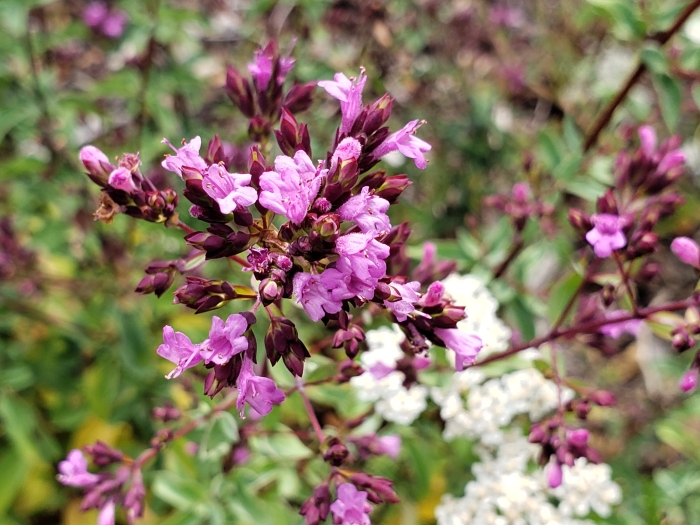Ornamental Oregano
(Origanum laevigatum)
Ornamental Oregano (Origanum laevigatum)
/
/

© Mary K. Hanson
CC BY 4.0
Image By:
© Mary K. Hanson
Recorded By:
Copyright:
CC BY 4.0
Copyright Notice:
Photo by: © Mary K. Hanson | License Type: CC BY 4.0 | License URL: http://creativecommons.org/licenses/by/4.0/ | Uploader: simpylmare55 | Publisher: iNaturalist |






Estimated Native Range
Summary
Origanum laevigatum, commonly known as ornamental oregano, is a woody-based perennial herb native to the rocky hillsides and scrublands of the Eastern Mediterranean, specifically Cyprus, Syria, and Turkey. It typically grows to a height of 20-24 inches (50-60 cm) and spreads to about 18 inches (45 cm) wide. The plant features strongly aromatic, ovate to oblong leaves and produces loose clusters of pink, funnel-shaped flowers with showy, persistent purple bracts that bloom throughout the summer months, adding a splash of color to the garden.
Ornamental oregano is valued for its drought tolerance, aromatic foliage, and the long-lasting ornamental bracts that accompany its flowers. It is commonly used in culinary gardens for its edible leaves, as well as in ornamental borders, rock gardens, and as ground cover due to its low maintenance and ability to spread. This plant thrives in full sun and requires well-drained soil, preferably on the lean side, and is known to be particularly tolerant of poor soils. It is, however, susceptible to root rot in wet conditions, especially during winter. Cultivars such as ‘Rosenkuppel’ and ’Herrenhausen’ have been recognized for their garden performance with the Royal Horticultural Society’s Award of Garden Merit, indicating their reliability and decorative value in gardens.CC BY-SA 4.0
Ornamental oregano is valued for its drought tolerance, aromatic foliage, and the long-lasting ornamental bracts that accompany its flowers. It is commonly used in culinary gardens for its edible leaves, as well as in ornamental borders, rock gardens, and as ground cover due to its low maintenance and ability to spread. This plant thrives in full sun and requires well-drained soil, preferably on the lean side, and is known to be particularly tolerant of poor soils. It is, however, susceptible to root rot in wet conditions, especially during winter. Cultivars such as ‘Rosenkuppel’ and ’Herrenhausen’ have been recognized for their garden performance with the Royal Horticultural Society’s Award of Garden Merit, indicating their reliability and decorative value in gardens.CC BY-SA 4.0
Plant Description
- Plant Type: Shrub, Herb
- Height: 1-2 feet
- Width: 1.5-2 feet
- Growth Rate: Moderate
- Flower Color: Pink
- Flowering Season: Summer
- Leaf Retention: Deciduous
Growth Requirements
- Sun: Full Sun
- Water: Low, Medium
- Drainage: Fast, Medium
Common Uses
Bee Garden, Border Plant, Butterfly Garden, Drought Tolerant, Edible*Disclaimer: Easyscape's listed plant edibility is for informational use. Always verify the safety and proper identification of any plant before consumption., Groundcover, Low Maintenance, Rock Garden, Street Planting
Natural Habitat
Rocky hillsides and scrublands of the Eastern Mediterranean
Other Names
Common Names: Hopley’s Purple oregano
Scientific Names: Origanum laevigatum
GBIF Accepted Name: